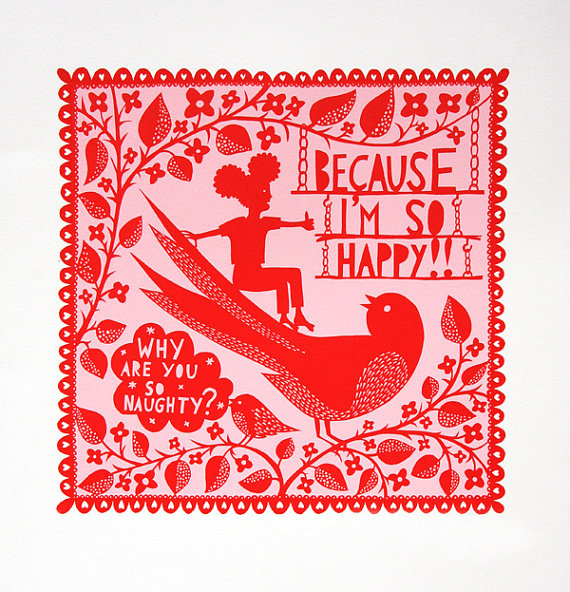
'Why Are You So Naughty?' screen print by Rob Ryan
Prints
We sell both limited edition prints and open edition prints by printmakers, illustrators and artists.
These prints are original works of art and not reproductions as the finished piece (or intended piece) is the print. A reproduction is an identical copy of an original in a different medium such as a giclée print of a painting (not an illustration, as the illustration is not the intended final piece).
The most important thing with collecting prints is to buy something you love and would be happy to keep for a long time.
View all prints and artwork on our website here
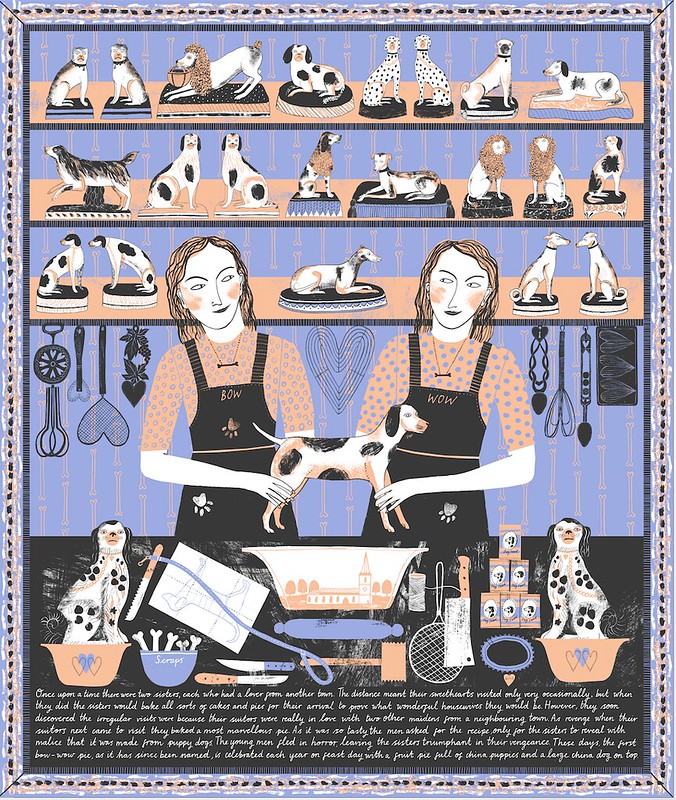
'Bow Wow Pie' limited edition screen print by Alice Pattullo
Artists
A lot of people find a particular artist they like and collect work over the course of many years. Look out for artists whose work you are drawn to. Early career artists can be a good buy, but if you are looking for an investment piece, mid career artists are safer.
View all artists on our website
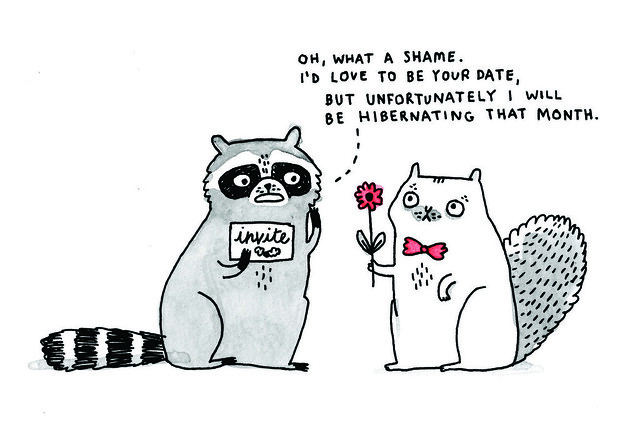
'Hibernating' by Gemma Correll from a previous Christmas exhibition. We sold the original drawing and giclée prints.
Medium
Hand printed pieces like screen prints, etchings, traditional lithograph (not offset litho) or lino cut prints are more likely to keep or increase in value than giclée prints, risograph prints or digitally printed pieces.
Look out for interesting techniques, or artists using a mixture of mediums, e.g. Graham Carter using foil block and silkscreen printing together.
We prefer hand printed artwork but printing technology is improving all the time and giclee prints are usually guaranteed lightfast for 80 - 100 years when cared for correctly, keeping their value and collectability.
A tip when considering a giclée print is to consider whether it would be possible to get the same effect from a different medium. A good example is the luminescence that Graham Carter is able to achieve from using gradient blends in his giclée prints. The effect would be almost impossible to achieve with screen printing. Click here to view 'Yeti Hibernation' by Graham Carter.
Hand printed by the artist is desirable but not essential. When professionally screen printed, the quality can be amazing.
Read about Printmaking on Wikipedia here.
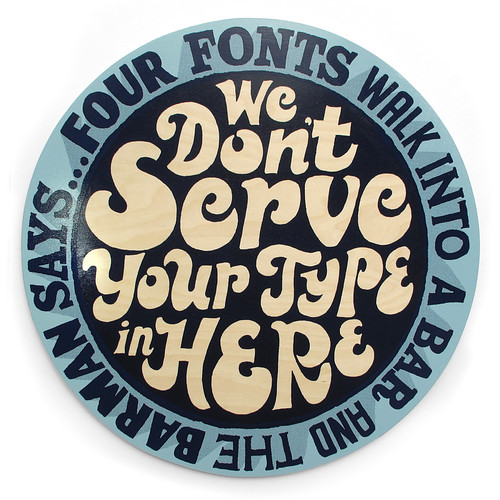
'Your Type' screen print on wood by Andy Smith
Signed and Numbered
Limited edition prints are the ideal investment. A low number is thought to be good, but in fact each number is worth the same as each print in the edition is identical. Some collectors like particular numbers. Small editions are more desirable as they are more exclusive. As are first editions of prints, although if a print has had a second edition (a second print run), it can increase the price of the original edition. Look for a number such as 10/50. This means this is number 10 of an edition of 50 prints.

'Leaves School Chart' by Tom Frost from a small edition of just 35
If buying from a series of prints, although very difficult to do, try to buy them all with the same edition number.
Artists proofs are something to keep an eye out for. They not part of the numbered print run and can contain interesting quirks which can make the print more collectable. They will usually not be numbered and be marked with A/P. Occasionally there will be a certain number of proofs and will be numbered such as A/P 1/10 or AP IV.
Open editions are generally less desirable to collectors, although if only a small number has ever been produced of a particular print, it could be more collectible.
Also note that when a print run is about to sell out, the price can often increase.
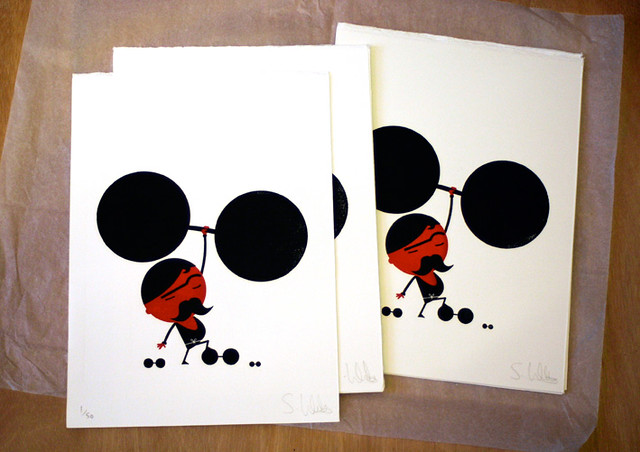
'Strongman' by Spencer Wilson, signed and numbered in the bottom corners.
Special Editions
Sometimes a print run will be created specially for a project or event. These can often be particularly sought after and can often be priced lower than the artists usual artwork. For example: we worked with Peskimo and Tom Frost to each create an exclusive print for Not Another Bill and were sold for just £15. Another example is 'If You Could...' who sold two colour screen prints by artists such as Rob Ryan and Anthony Burrill for £40 each. An original screen print by Rob Ryan usually sells for around £250 - £350. Rob Ryan's 'If You Could...' print has since popped up on eBay and sold for in the region of £200 plus. These are great things to keep an eye out for!
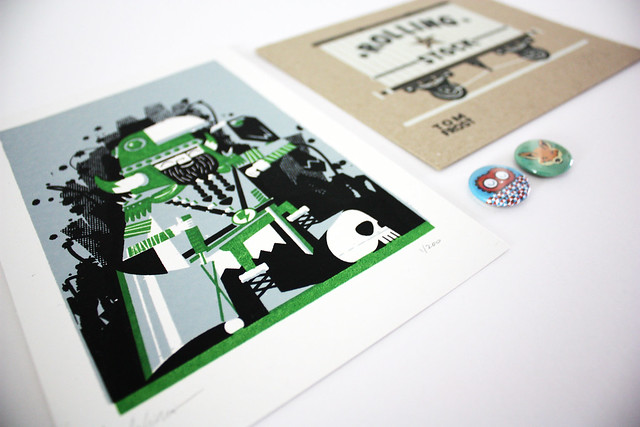
Peskimo and Tom Frost for Not Another Bill
Our 10 year anniversary set of prints are a great item for a collector or someone starting their collection. As an exclusive collection of limited edition prints in a small run of just thirty, someone could either pick and choose from the set or purchase the full set presented in a box.
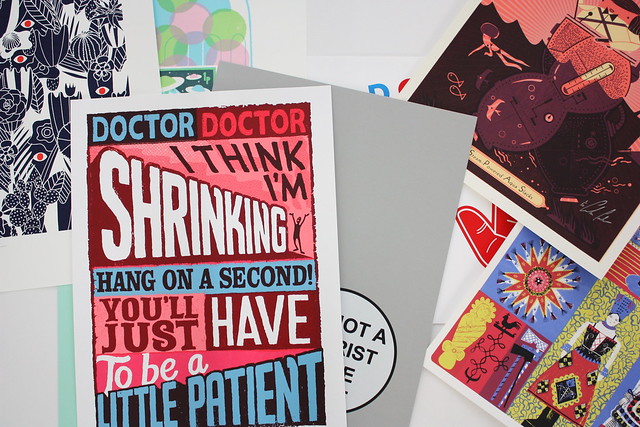
Prints from Soma's 10th Anniversary Edition.
Caring for your prints to keep their value
Try to avoid handling as much as possible. Hands must be spotlessly clean and do not use hand cream which can leave a greasy residue on the artwork. Cotton gloves can be used.
Pick up prints using both hands to avoid creasing or crimping. If you are unused to handling prints then if you pick up the print at diagonal corners you will avoid any damage.
Keep out of direct sunlight. Try to avoid hanging valuable artwork above radiators and keep away from open fires to avoid smoke damage.
If you plan to store your prints for any length of time, you should ideally remove them from tubes and store flat. It may be worth investing in a portfolio case. Use protective acid free tissue paper to keep your prints in top condition.
If hung against against an outside wall, make sure there is space between the frame and the wall to allow for airflow which will prevent any condensation which can damage the print. Check periodically.
Keep in a cool, dry, well ventilated place. Changes in temperature and humidity can affect paper.
Trimming
Do not trim your print to fit a frame unless it has been printed on oversized paper allowing this. If in doubt get advice from your framer or from the place you have bought the print from.
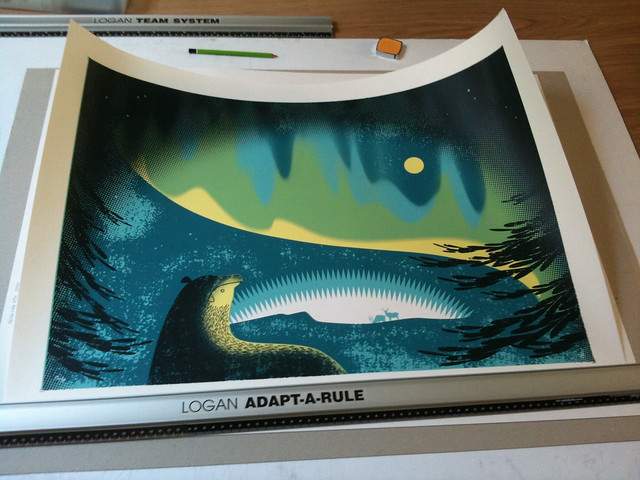
'Northern Lights' by Sally Elford being measured for a mount so the paper doesn't have to be trimmed.
Hopefully this guide will work as a starting point to help you to start a collection!


No comments:
Post a Comment